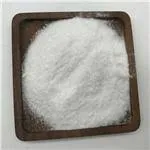Sulfamate Acid An Overview
Sulfamate acid is an organic compound that plays a vital role in various industrial applications and chemical processes. This article explores the properties, uses, and significance of sulfamate acid in different fields.
Chemical Structure and Properties
Sulfamate acid, or amidosulfonic acid, is a sulfonic acid derivative with the chemical formula NH2SO3H. The structure consists of a sulfonyl group (-SO3H) attached to an amine group (-NH2), making it an important player in both organic and inorganic chemistry. It is usually encountered as a white crystalline solid that is soluble in water, exhibiting excellent thermal stability and low volatility. These properties make sulfamate acid an ideal candidate for various applications, particularly in the field of acid-based reactions.
Applications in Industrial Processes
One of the most significant applications of sulfamate acid is in the production of sulfamate esters, which serve as intermediate compounds in synthesizing various chemicals. These sulfamate esters can be utilized in pharmaceutical formulations, agrochemicals, and other fine chemical products. The versatility of sulfamate acid in chemical transformations is largely attributed to its ability to stabilize reactive intermediates, enabling the formation of complex molecular structures.
In the realm of electroplating, sulfamate acid is highly regarded for its role in the production of nickel plating solutions. Nickel sulfamate baths are known for providing a smoother and more uniform deposit compared to other nickel plating methods. The inclusion of sulfamate acid helps control the plating process, ensuring the quality and durability of the metal coatings. This application is essential in the manufacturing of electronic components and automotive parts, where high-quality nickel plating is crucial.
sulfamate acid

Biological Significance
Beyond industrial uses, sulfamate acid is gaining attention in biological and medical research. It is known to influence various biochemical pathways and may play a role in drug development. Sulfamate derivatives have been studied for potential therapeutic applications, particularly in the treatment of diseases related to inflammation and oxidative stress. Although research is ongoing, the biological significance of sulfamate acid reveals its potential as a functional group in drug design.
Environmental Considerations
As with any industrial chemical, the environmental impact of sulfamate acid must be considered. While sulfamate acid is generally regarded as having lower toxicity than many other acids, its production and disposal raise concerns. The sulfamate group can be challenging to break down in wastewater, necessitating careful management to mitigate environmental risks. Thus, industries utilizing sulfamate acid are encouraged to adopt sustainable practices, including recycling and waste treatment measures, to reduce their ecological footprint.
Conclusion
Sulfamate acid is a multifaceted compound with considerable importance in both industrial and biological contexts. Its unique chemical properties enable a range of applications, particularly in the production of sulfamate esters and nickel plating processes. Furthermore, ongoing research into its biological roles emphasizes the compound's potential in pharmaceutical development. As industries continue to innovate, it will be essential to balance the benefits of sulfamate acid with environmental responsibility, ensuring its sustainable use for years to come.
In summary, sulfamate acid is much more than a simple chemical; it represents a bridge between industrial efficiency and potential therapeutic advancements. Its versatility and effectiveness make it a valuable asset across various sectors, paving the way for further exploration and innovation in science and industry.

